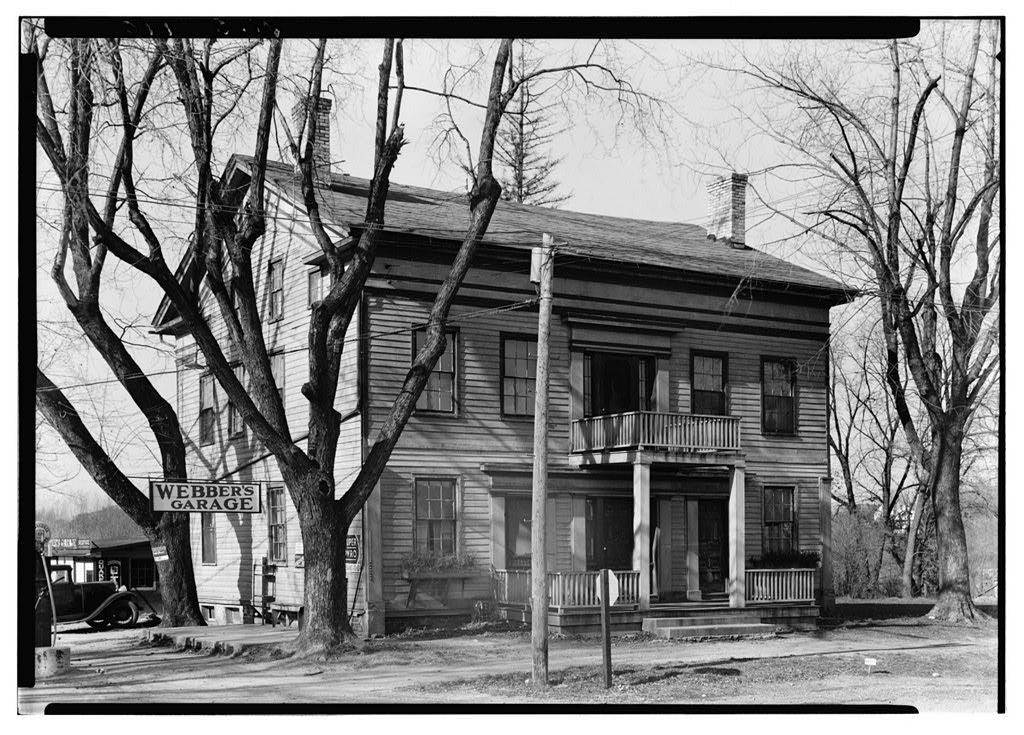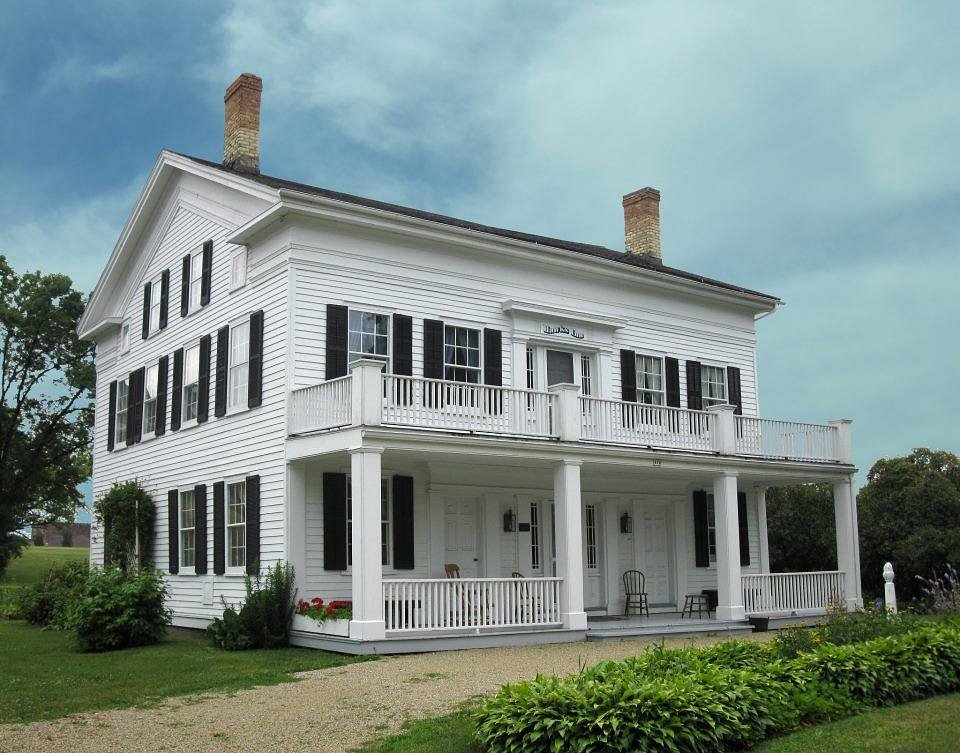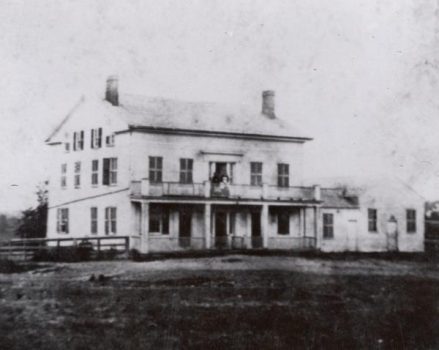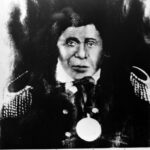Standing at two-and-a-half stories, with a side-gabled roof and paired end chimneys, and painted white with black shutters, the image of Hawks Inn would have filled travelers with hope and relief during their trek along the stagecoach route from Milwaukee to Madison, as the inn served not only as a place of refuge but also of entertainment. During the mid-1800s, stagecoaches became the main mode of transportation, and stagecoach inns were simultaneously constructed to serve as lodging for overnight travelers. Built in 1846 by Nelson Hawks, Hawks Inn stands as a prime example of a building type that represents westward expansion both in design and purpose.
Greek Revival architecture, as displayed at Hawks Inn, was a popular architectural style in America during the first half of the 1800s, and was brought west into the United States’ newly developing territories. Identified by its low gabled roofs, use of columns, symmetry, and emphasized entrances, this distinctive style can be seen in stagecoach inns all across Southeastern Wisconsin. Greek revival architecture became popular not just in Wisconsin but throughout the nation as it represented the ideology this country was founded on; as the United States was modeled after the democratic ideals of Ancient Greece, it seemed only fitting to draw architectural inspiration from that same culture.


Stagecoach inns throughout Southeastern Wisconsin such as the Wade House, Dousman Inn, and Hawks Inn all made use of this style, and today stand as nationally recognized historical buildings in part due to their embodiment of these design trends. In addition to the style’s popularity during this period, the similarity of design amongst these buildings also helped travelers identify them as inns. These large buildings ornamented, with columns, and painted white, would have stood out as beacons on the prairie, signaling to travelers an opportunity for refuge after a difficult day of travel.
As stagecoaches reached their peak popularity as a method of transportation in the late-1840s and early-1850s, stagecoach inns like Hawks became recognizable features in the Southeastern part of the state. As more people traveled the roads, these inns evolved into hubs of community, politics, and entertainment. For example, Hawks Inn not only worked to give those venturing out of the city a night of safety and rehabilitation, but also operated as an information center to the larger outside world; connecting those living in the newly founded town of Delafield to the rest of the state. With radio and television yet to be invented, many inns (Hawks included) served as centers where locals could hear about the events happening in the world beyond their community. Hawks Inn exemplifies other stagecoach inns from across the state standing as a historical place where locals could receive news from outside their isolated settlements, which remains a vital component of Wisconsin history.
While the building no longer functions as an inn, it persists as a monument to the westward expansion of American people and national ideals. Hawks Inn represents democracy not only through its Greek Revival design, but in its history of bringing people from different backgrounds together whether they are locals or travelers. As Americans looked to move West, Hawks Inn served as a building that helped facilitate this expansion while furthering ideals of democracy by hosting political discussions and information exchanges under its roof. Hawks Inn, portrays the legacy of stagecoach inns within the state, as well as demonstrating an ideal sample of what stagecoach inns looked like in design, and how they operated in their prime. Beyond all of this, the Inn operated as a place where people close or far from home, strangers or old friends could get together and share in each other’s company over a warm meal or cold beverage.
Written by Ben Wellenstein, September 2024.
Sources
Jim Babcock, “Some Thoughts on the Changes at Hawks Inn,” Delafield and Hawks Inn History Book, 2. Delafield: Delafield Historical Society.
Harry Ellsworth Cole, Stagecoach and Tavern Tales of the Old Northwest. Louise Phelps Kellogg, ed. Cleveland: Arthur H. Clark Co., 1930.
“Greek Revival,” Architectural Styles of America and Europe. Accessed March 2024. https://architecturestyles.org/greek-revival/
“Hawks Inn,” SAH Archipedia. https://sah-archipedia.org/buildings/WI-01-WK18
“History of Hawks Inn,” Hawks Inn and Delafield History Center. Accessed 22 September 2023. https://hawksinn.org/about-hawks-inn/history-of-hawks-inn/
Ethel Jacobson, “The Story of Hawks Inn,” Delafield and Hawks Inn History Book, 1. Delafield: Delafield Historical Society.
National Register of Historic Places Nomination, “Hawks Inn,” Delafield, Waukesha County, Wisconsin. National Register #72000068. https://npgallery.nps.gov/AssetDetail/NRIS/72000068
William I. Tchakirides, “Nelson P. Hawks,” Encyclopedia of Milwaukee. https://emke.uwm.edu/entry/nelson-p-hawks/

Hawks Inn & Delafield History Center
This object is owned and cared for by the Hawks Inn Historical Society. Research for this object essay and its related stories was supported by the Delafield History Center in Delafield, Wisconsin.




